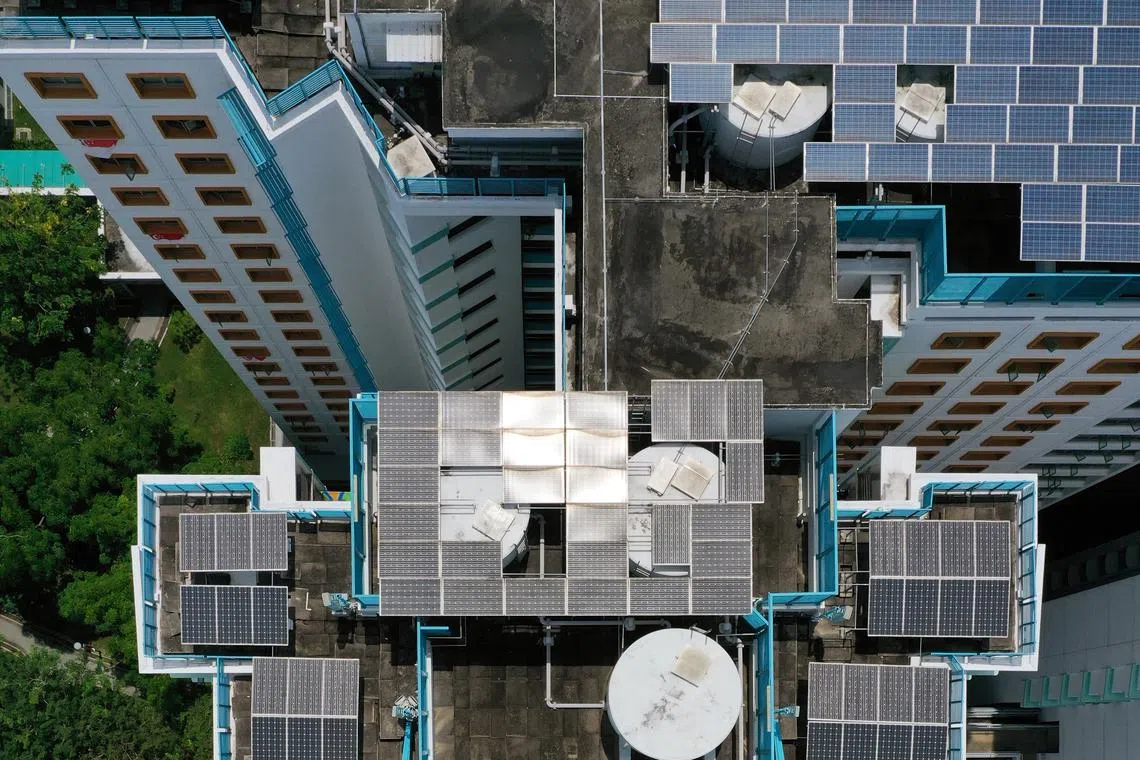EMA looks to improve grid resilience, reliability as share of renewables increase
Sign up now: Get ST's newsletters delivered to your inbox

Solar energy could account for about 10 per cent of Singapore's projected demand in 2050.
PHOTO: LIANHE ZAOBAO
Follow topic:
SINGAPORE - As Singapore looks to integrate more renewable energy into its electricity grid to green its energy mix, the Energy Market Authority (EMA) is incorporating additional capabilities to improve the grid’s resilience and reliability, it said on June 11.
Singapore has set a goal of reaching 2GW-peak of solar capacity by 2030
Solar energy, which currently accounts for less than 1 per cent of domestic generation, could account for about 10 per cent of its projected demand in 2050.
It will be importing at least 4GW of low-carbon electricity from regional countries
The Republic currently relies on around 95 per cent natural gas for power generation.
Since solar panels are unable to produce electricity during all hours of the day, there may be a mismatch between peak supply and peak demand among households, businesses and industries.
Peak demand tends to occur in the afternoons, when commercial and industrial activities are running at full speed or during especially hot days.
Fluctuations in solar output can disturb the balance between supply and demand, causing disruptions and grid instability.
Therefore, EMA will be adding a solar photovoltaic (PV) forecasting model to its grid, which will help the agency to better predict solar output and take pre-emptive measures to manage such intermittency.
This could involve dispatching natural gas generating plants and using energy storage systems
EMA told The Straits Times that there are two energy storage systems – with a total of 285 megawatt-hours of capacity connected to the grid – that play a critical role in helping Singapore achieve its 2GW-peak target.
Prior to the enhancements, EMA had an automatic generation control system that monitored electricity demand and automatically adjusted the output of conventional power generators every few seconds to match the dynamic changes in demand.
“The new capabilities allow EMA to promptly manage changes in demand and supply, a crucial enhancement in ensuring a reliable and stable electricity supply as Singapore scales up solar PV deployment,” the authority said.
This comes as EMA anticipates demand to grow over the medium to long term as industries seek ways to reduce their carbon emissions, while electricity-intensive sectors like advanced manufacturing and the digital economy will expand.
System peak demand is also expected to increase at a compound annual rate of up to around 5 per cent over the next five years.
The new energy management system is also capable of modelling any type of electricity generation plants, including geothermal energy and electricity imports, said EMA. It will be equipped with intelligent alarm processing that can bolster the power system operators’ awareness in the event of a power disruption, which may include equipment malfunction, for instance.
“This new function synthesises alarms received from the power plants and transmission substations in times of emergencies... and would help EMA respond to these alarms more effectively by reducing the risk of information overload on the operators in the control room.
“It also enables quicker decision-making and response to issues, minimising downtime and enhancing overall system reliability,” the authority added.


